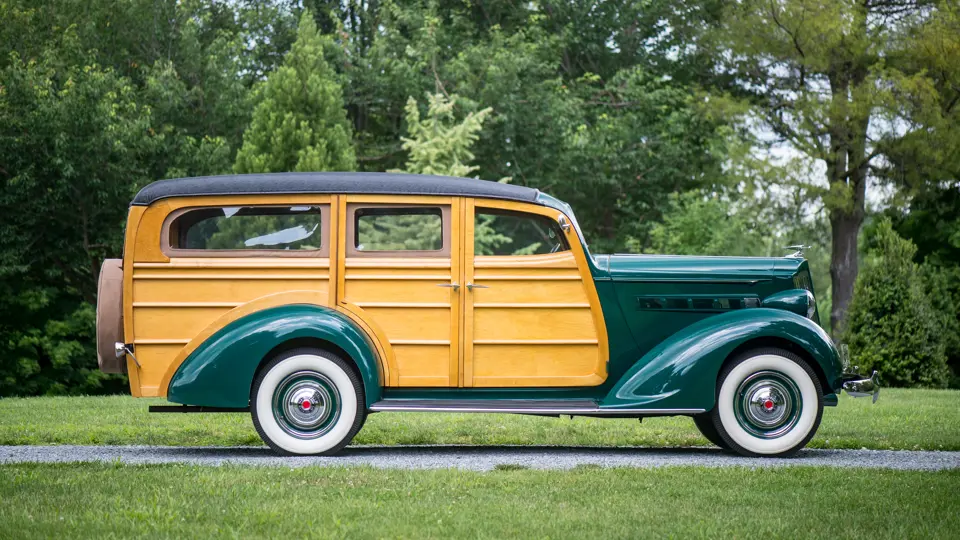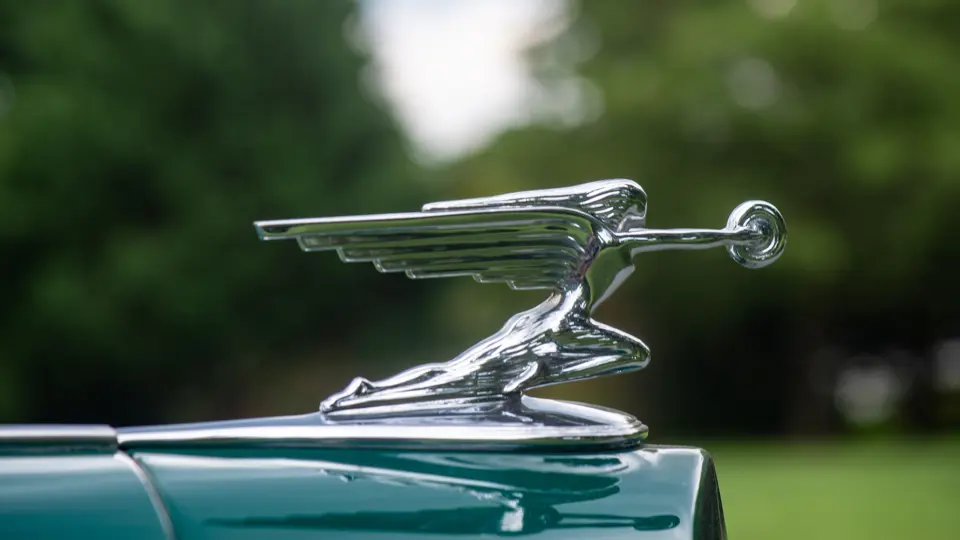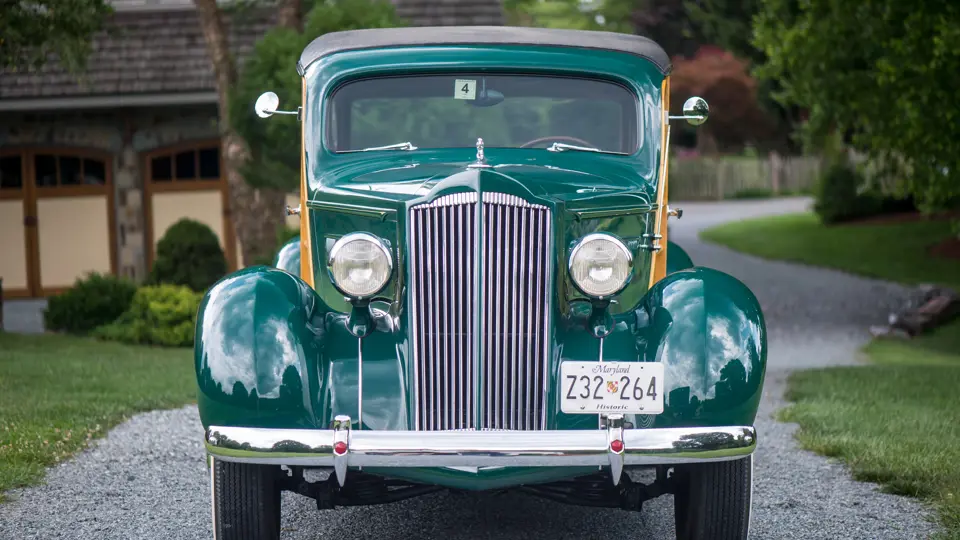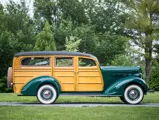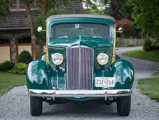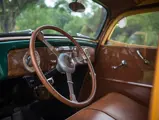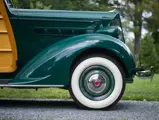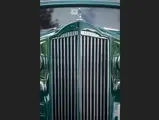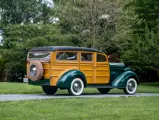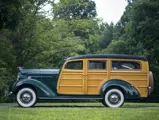
1937 Packard Six Station Wagon by Baker-Raulang
{{lr.item.text}}
$80,300 USD | Sold
{{bidding.lot.reserveStatusFormatted}}
- Rare wooden bodywork by Baker-Raulang of Cleveland
- Beautifully restored, with exquisite woodwork and detailing
- Well-regarded 237 cu. in L-head inline-six powertrain
- One of the earliest surviving Packard station wagons
When one imagines a coachbuilt Packard, it is typically a rakish speedster, a luxurious dual-cowl phaeton or grand limousine that likely comes to mind. This Six Station Wagon is a coachbuilt Packard, too, however—and a very rare one at that.
The Packard Six, known internally as the 115-C in reference to its 115-inch wheelbase, was introduced for the 1937 model year as part of the automaker’s 15th Series. Designed to make the exclusive marque a little less exclusive, hand-made bodies were, understandably, not usually part of the Six’s value proposition.
Yet the Six Station Wagon was different. While all other 1937 Sixes started at under $1,000, the wagon, introduced midway through the model year, was an outlier at $1,295 and up. For that, a buyer received a distinctive, elegant interpretation of the iconic, hard-working ‘woodie’ body style (similar bodies were offered on the eight-cylinder Packard One Twenty).
Packard turned to Cleveland coachbuilder Baker-Raulang for initial production of the wooden bodywork; it is believed that only about 60 wagons were produced in the inaugural year and that only the very earliest few cars had Baker-Raulang bodies. The rest of the exterior, here finished in a factory-correct coat of Coachman Green, is unmistakably Packard, from the immediately recognizable grille to the “Goddess of Speed” hood ornament worn by Packards of all shapes and sizes.
But the relationship to the rest of the Packard line is more than skin deep: The junior model’s flathead inline-six motor is effectively the inline-eight used in its upmarket contemporary, the One Twenty, minus two cylinders. Though stroke is identical, a slightly larger bore yields a displacement of 237 cubic inches. Among Packard aficionados, these six-cylinder cars are well regarded for robustness and all-around drivability.
The car offered here spent much of its life in New England. While in the possession of collector Brian Allen, of Meredith, New Hampshire, the wagon’s body was refinished, its chrome replated, and its engine rebuilt; restoration of its sadly weathered wooden body was carried out by Ron Fulmer of Guilford, New Hampshire. Fulmer, a skilled woodworker, replaced each piece of wood, copying the originals precisely and rebuilding the body exactly in the manner in which it was originally finished by Baker-Raulang.
Collector John Moir later purchased the car from Mr. Allen, who displayed it at the 1999 Packard Magnum Opus, held in Warren, Ohio, as well as at several New England shows for beach woodies over the years. More recently the consignor, who purchased the car from the collection of Mr. Moir, entered it in the 2018 St. Michaels Concours d’Elegance in Maryland; after completing the 35-mile event tour, it earned a second in the pre-war closed class.
This 1937 Packard Six Station Wagon is offered with a file detailing its restoration with numerous receipts and includes copies of articles on the model, photographs taken prior to restoration, and information on its Magnum Opus appearance—as well as an Packard six-cylinder service manual.




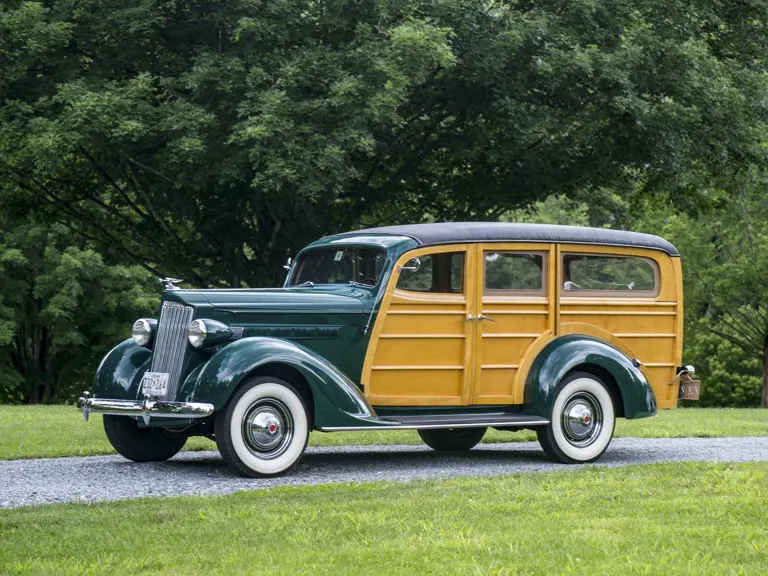

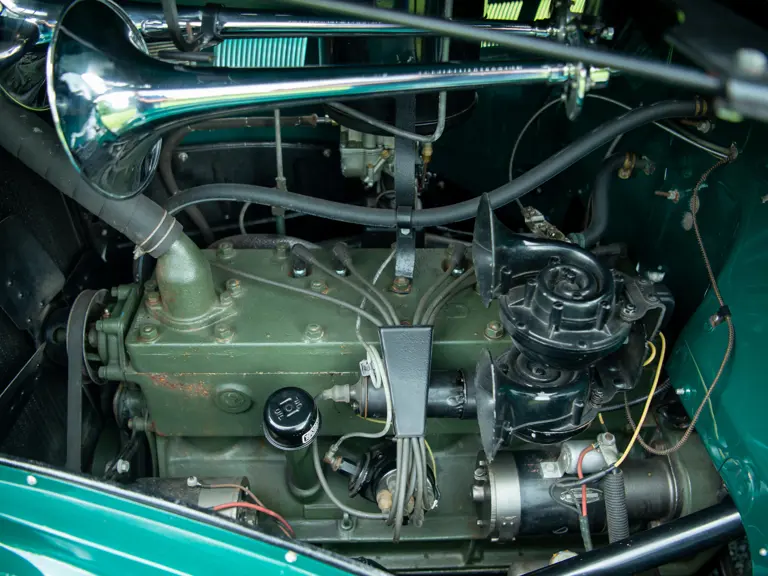
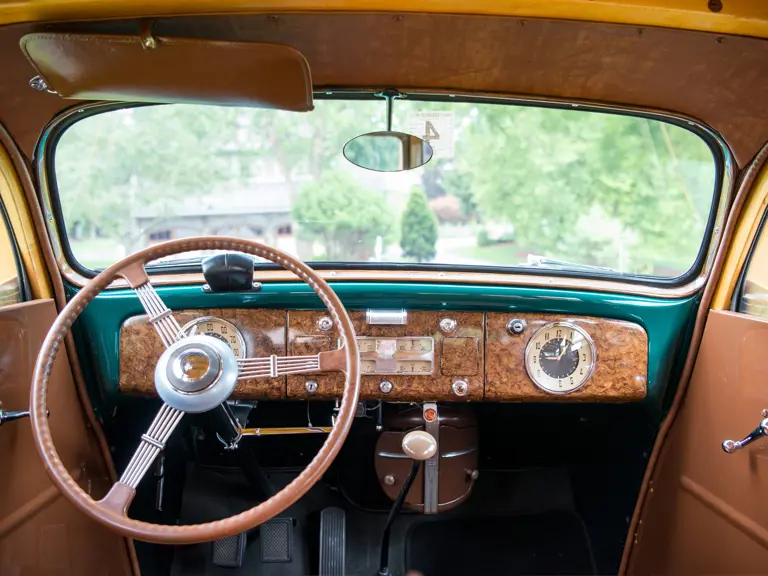
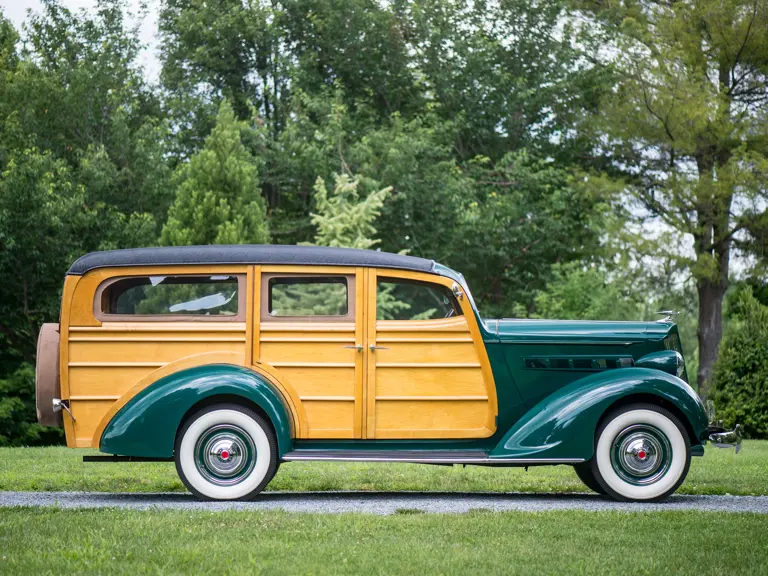
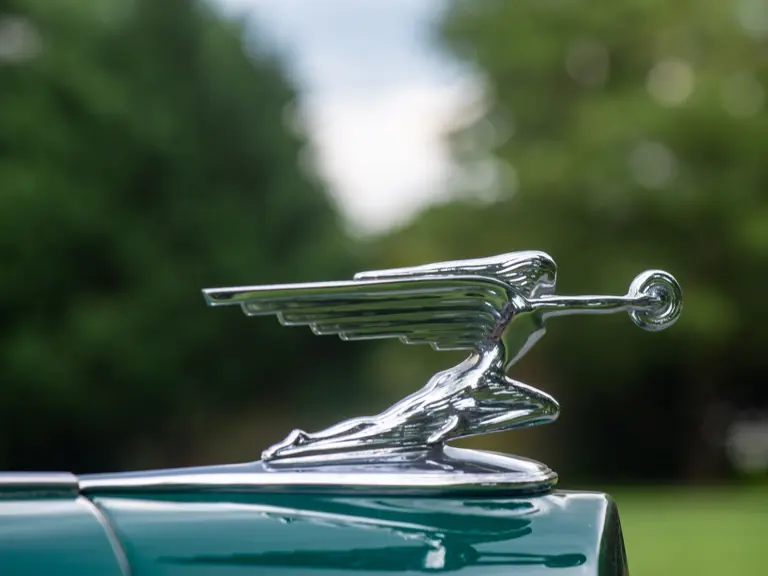

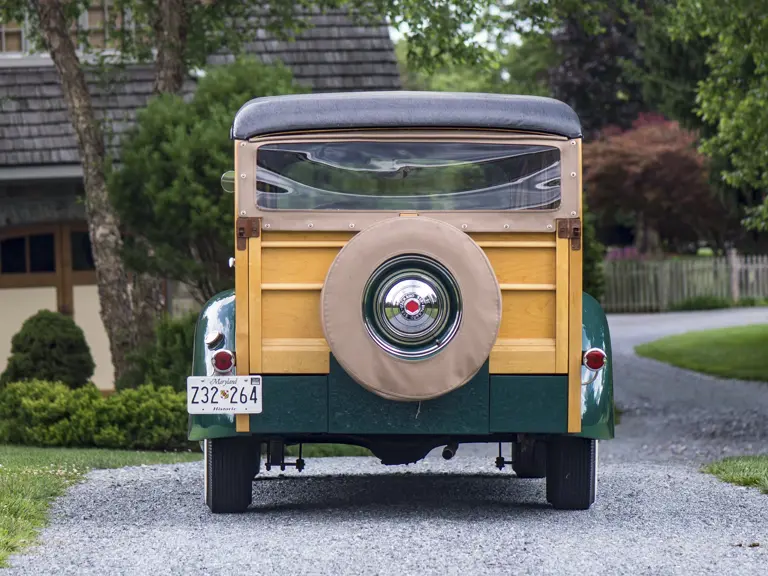
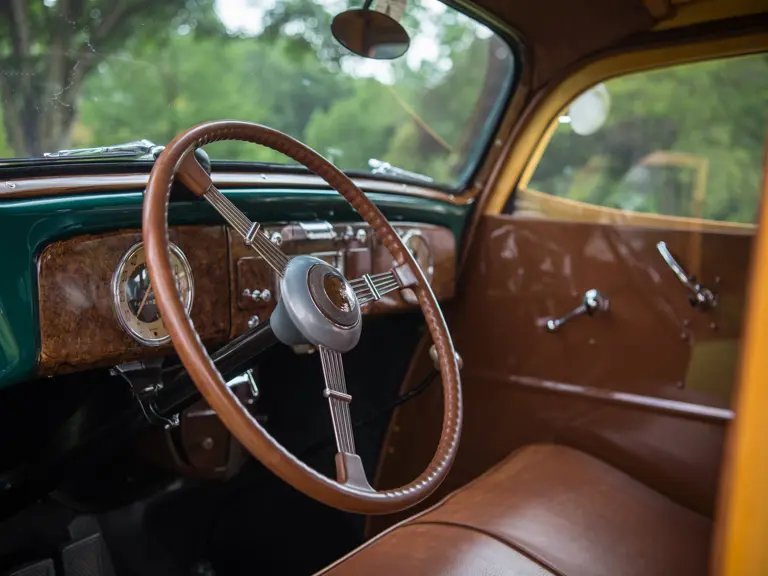
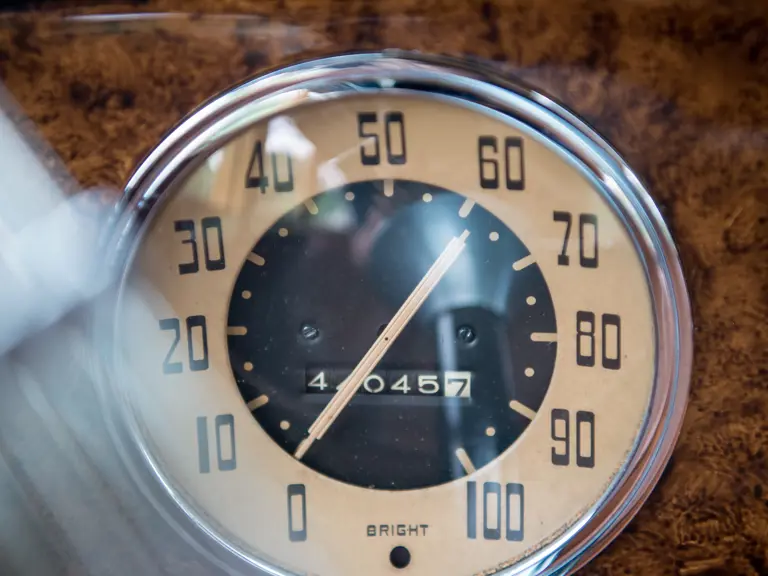
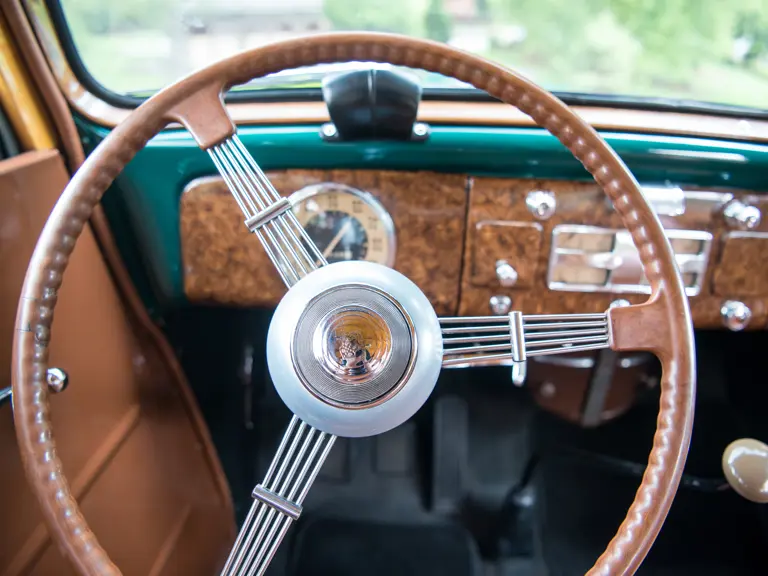
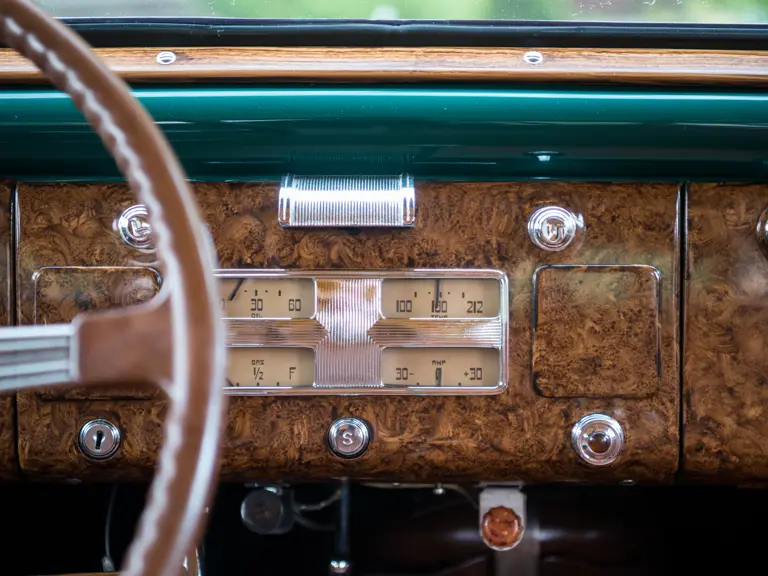
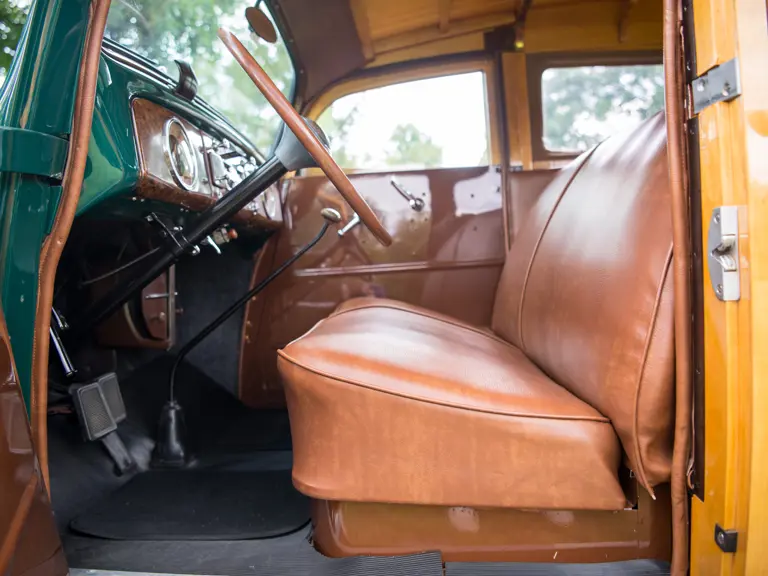
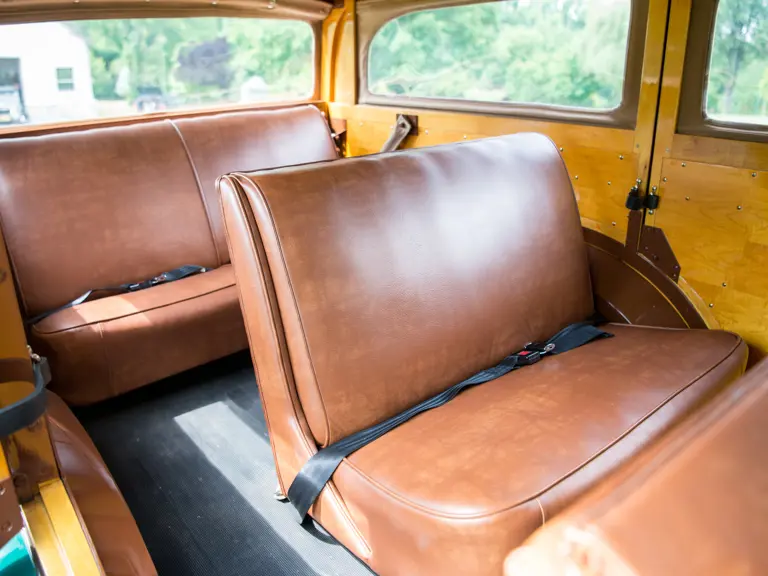
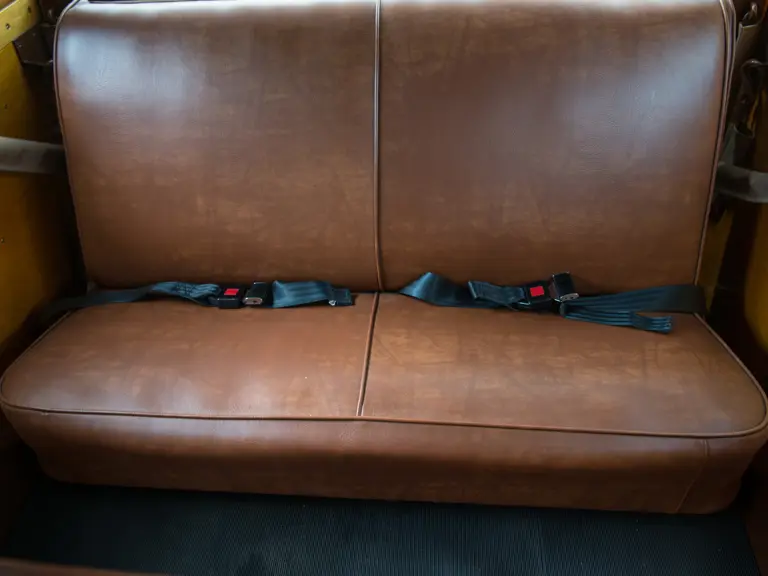
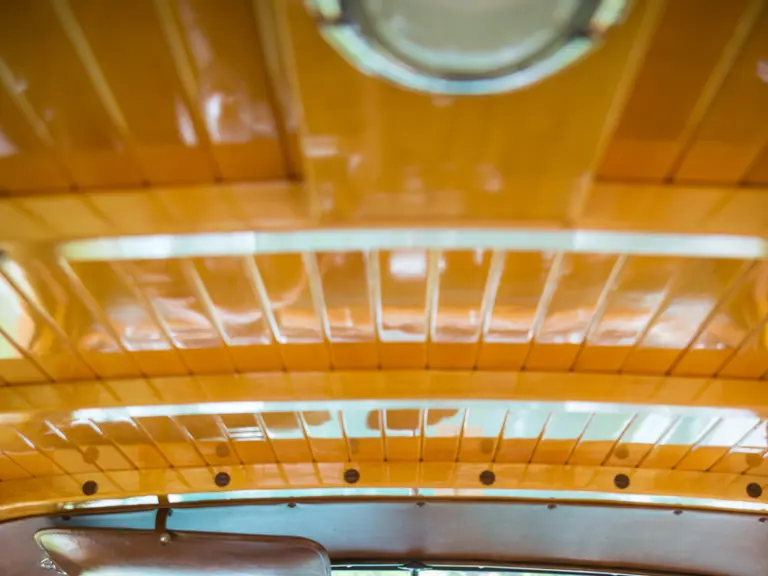

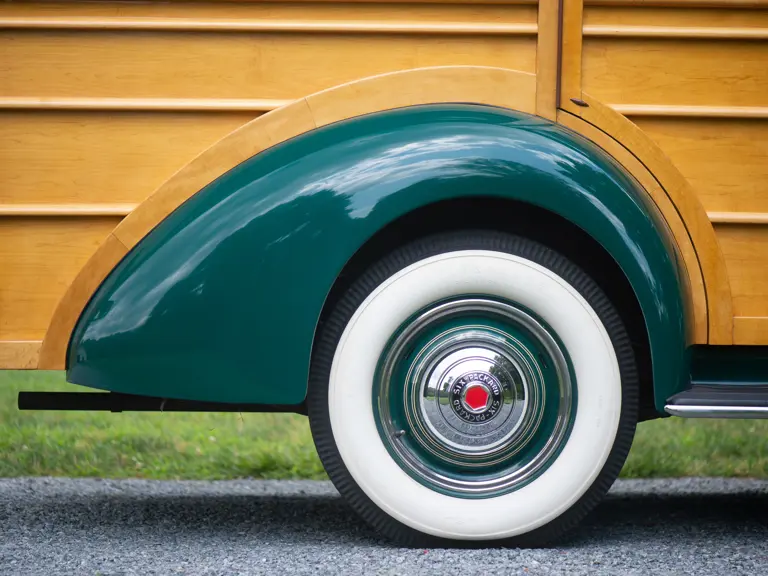
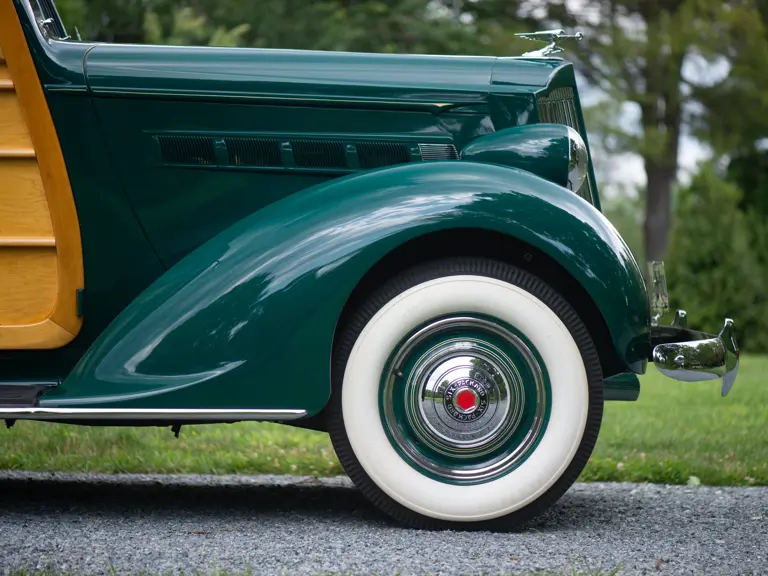
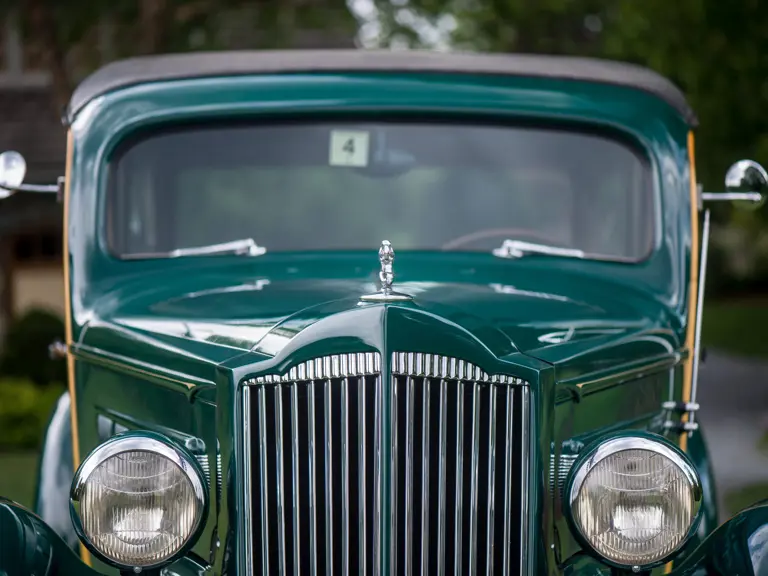
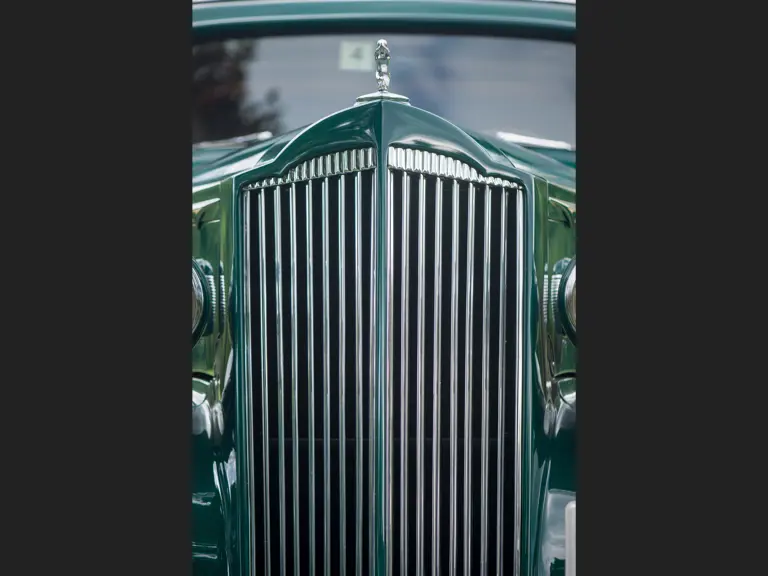
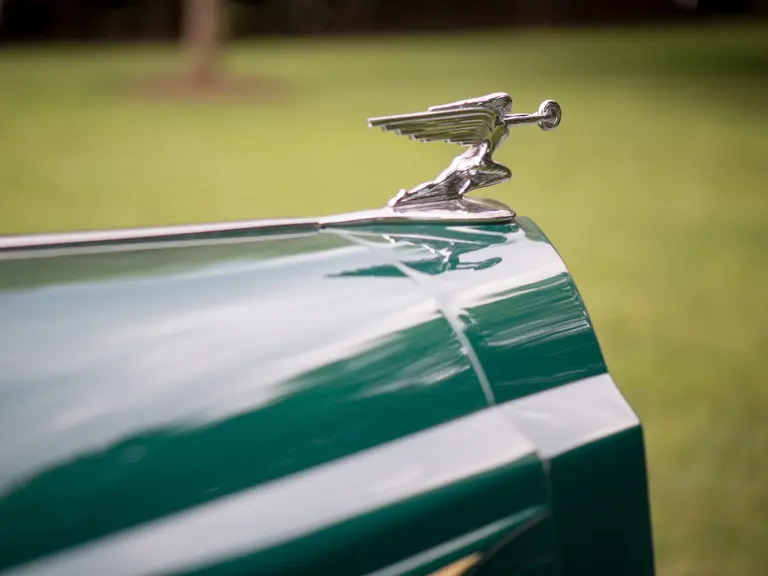
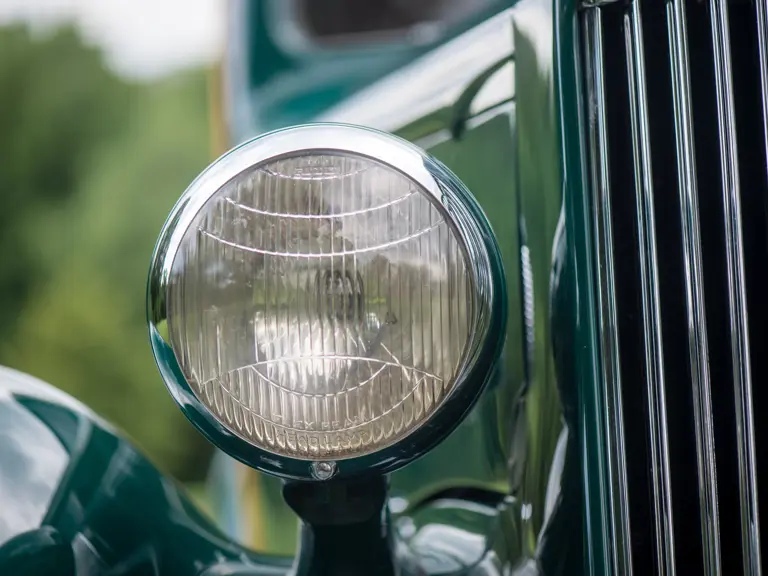



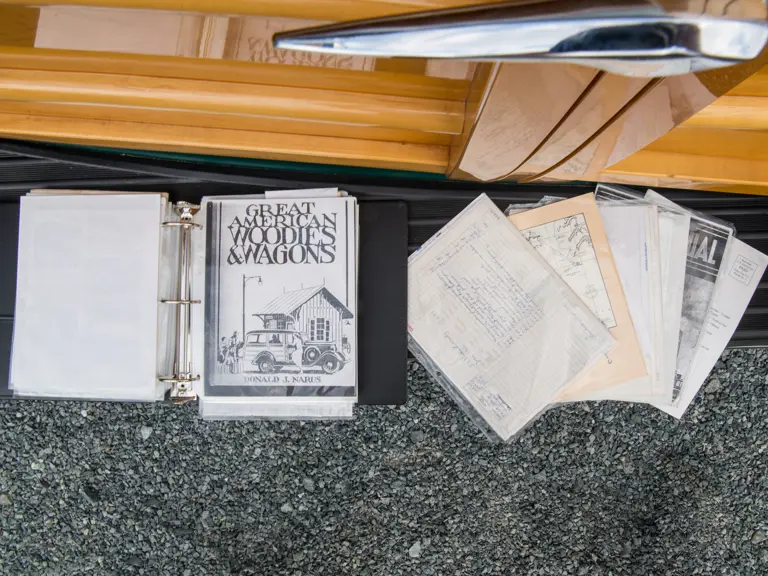
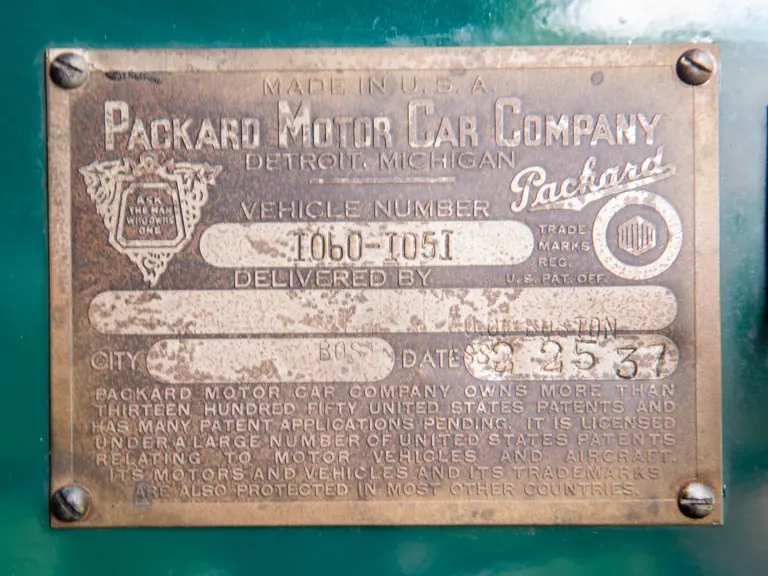
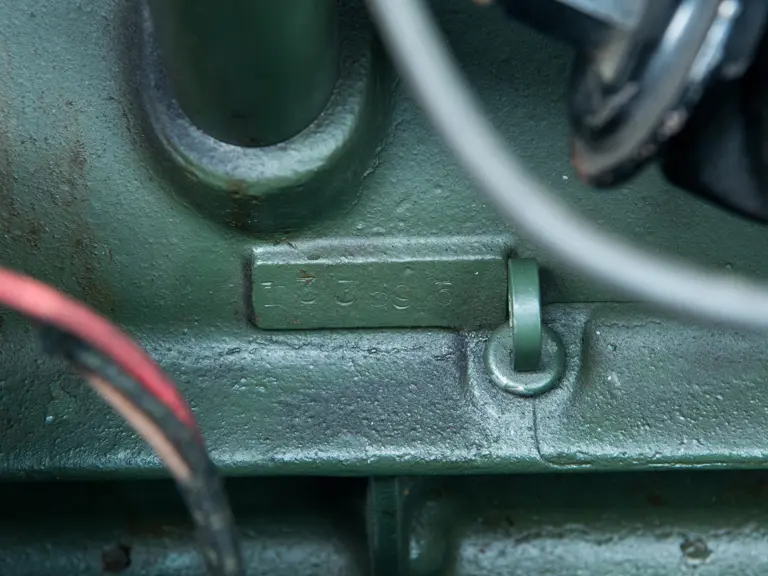
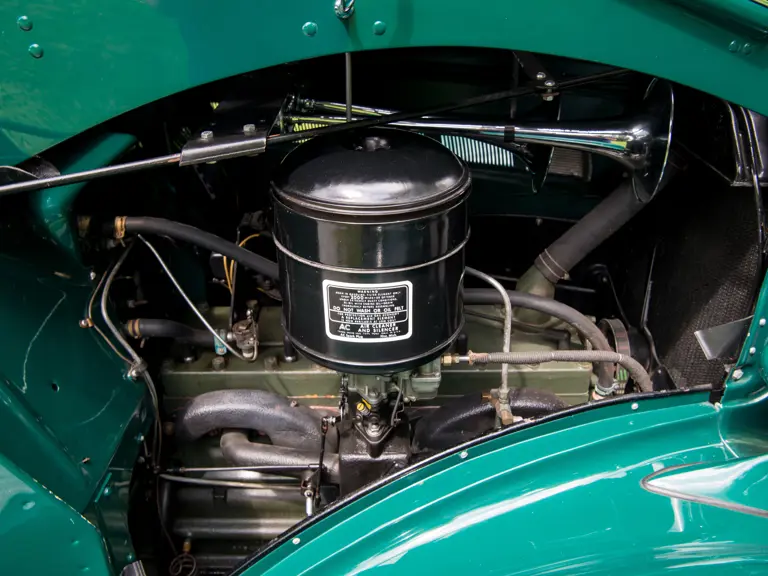
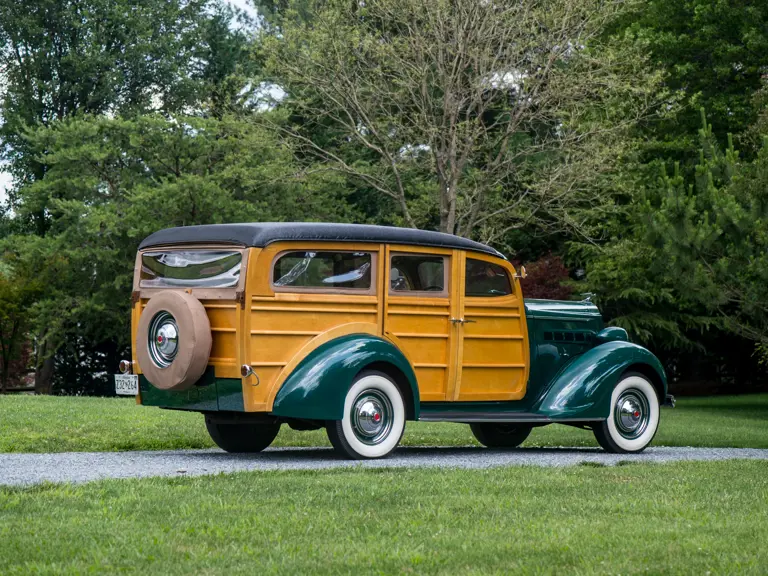
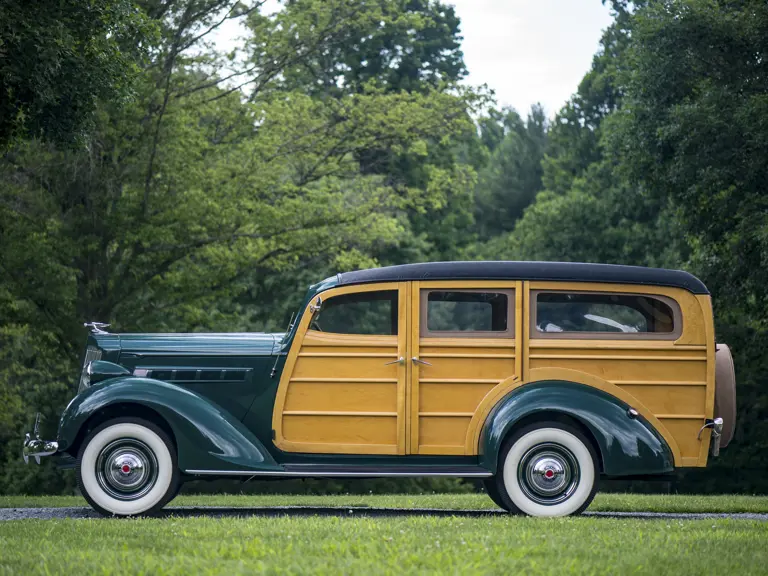
 | North Potomac, Maryland
| North Potomac, Maryland
